Murray Proposes Southeast Seattle Light Rail Station and North Seattle Ped Bridge as Part of $900 Million Levy

Caffeinated News
1. Mayor Ed Murray announced a nine-year, $900 million transportation levy plan yesterday as the Greg Nickels's–era levy—largely a maintenance levy—is set to expire. Murray is upping the ask: About $275 a year in property taxes for the median house vs. former mayor Greg Nickels's $130 per year; Nickels's nine-year levy, known as Bridging the Gap, raised $365 million. The urbanists at Seattle Transit Blog called it a "growth dividend."
With the extra money, the new levy, dubbed Move Seattle, funds more work, mostly with pedestrian-friendly and alternative transit projects such as more safe routes to schools projects, more ped safety fixes (like the rechannelization on Rainier Avenue South), and more multimodal and transit corridors. The Seattle Department of Transportation provided a comparison between the two levies, which outlines Murray's plan:
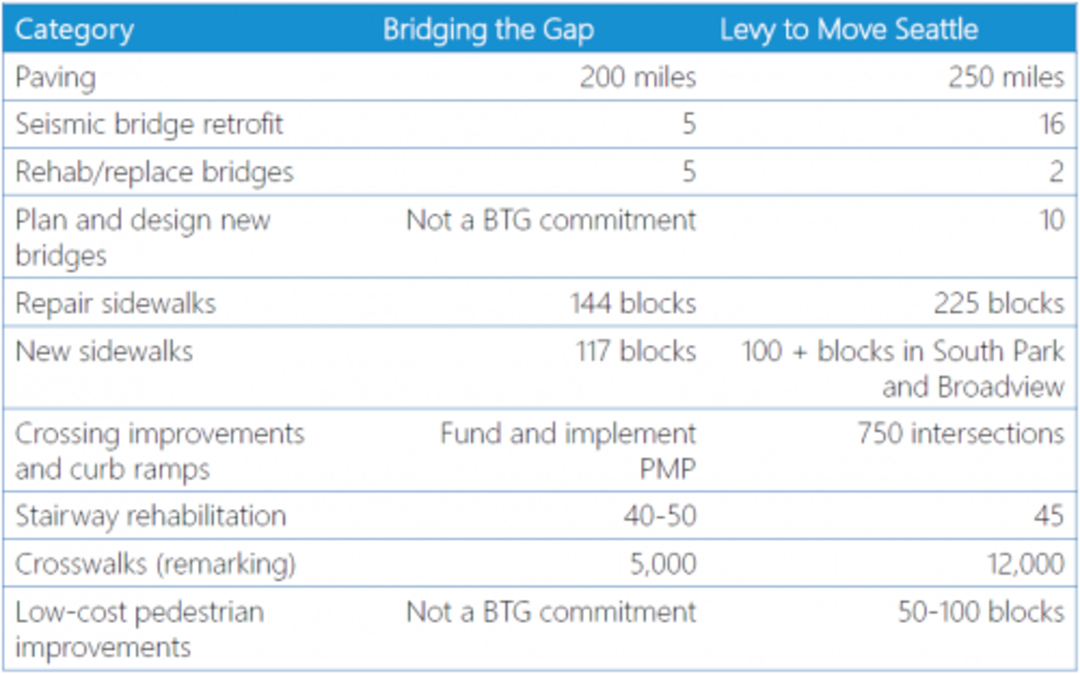
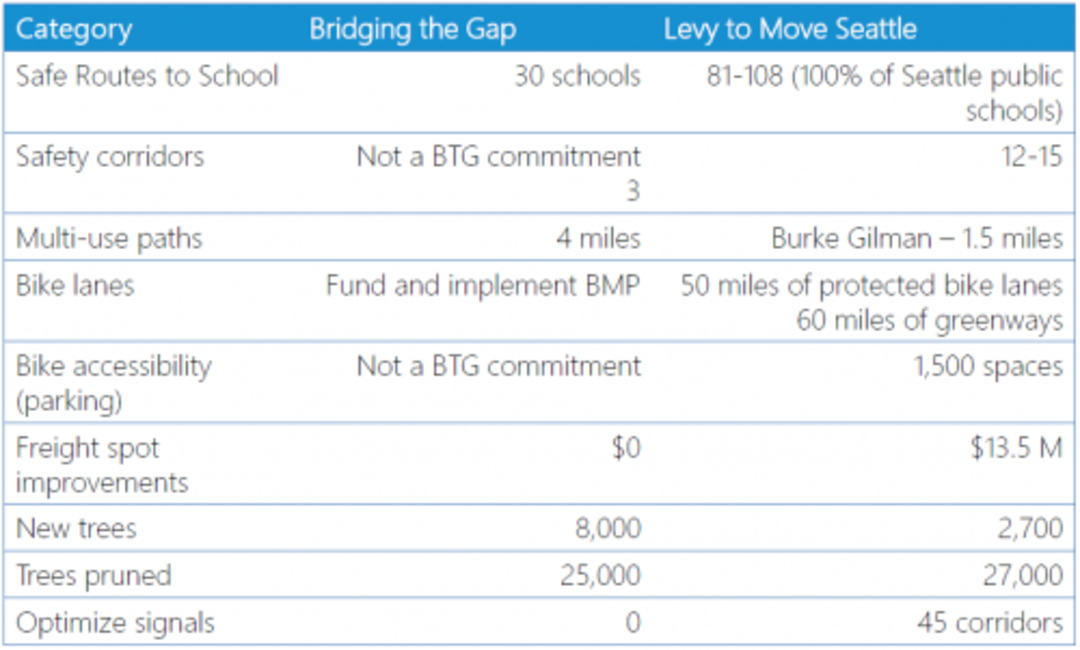
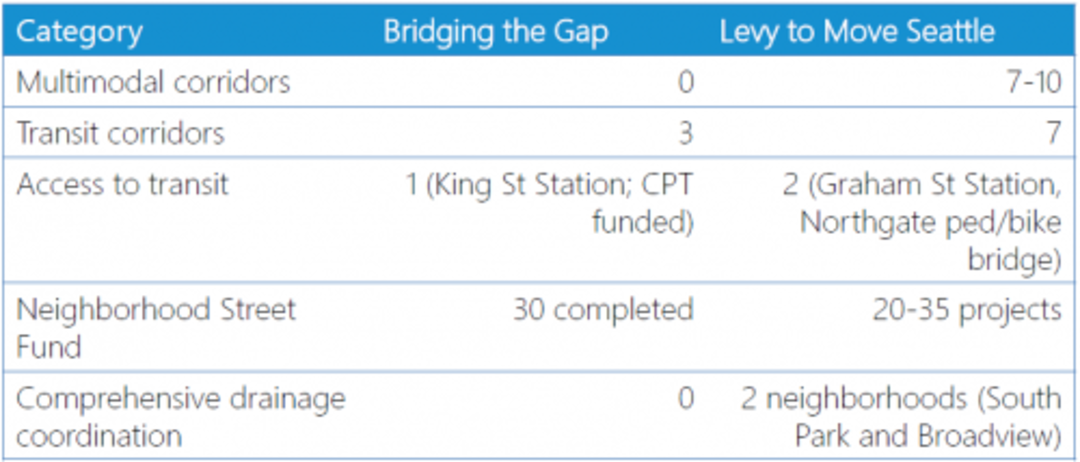
The big news in Murray's proposal: $10 million to begin design and engineering to add back the Graham light rail station at South Graham Street and MLK Jr. Way South. The station—between the Columbia City and Othello station in southeast Seattle—was cut during Sound Transit's first phase.
"Graham should have been built in [phase one]," Murray's transit policy director Andrew Glass Hastings says. "It's an obvious gap in the Rainier Valley alignment and will add access to communities that need it."
Asked about another light rail add—north Seattle is clamoring for a station at 130th—Hastings says Murray is going to ask for that station as part of the ST2 Lynnwood extension.
"It's an obvious gap in the Rainier Valley alignment and will add access to communities that need it."
But north Seattle transit advocates have something more timely to cheer in yesterday's proposal: $15 million to add a pedestrian bridge that would connect the Licton Springs neighborhood west of I-5 at 100th Street Northeast to the Northgate light rail. The bridge has been a rallying cry of in northeast Seattle from neighbors calling themselves the 92 percenters. The bridge, projected to serve the 92 percent of daily riders who will walk or bike to the stop, will connect the surrounding neighborhood around North Seattle College to the coming Northgate light rail station (set to open in 2021). The bridge, a premier piece of transit-oriented-development infrastructure, was the community's idea, an alternative to ST's original plan for a parking garage that would've served just 8 percent of daily riders—the commuters who will drive there. It's a $25 million project, but only has about $10 million in current funding. The new Murray plan would put in the remaining $15 million.
Despite public support, the project got derailed late last fall when the city couldn't get federal funding for it.
(The pending state transportation package includes $10 million for the $25 million ped bridge project; if that money is approved, the mayor's office tells me they will redirect it to other light rail access needs.)
2. Speaking of reprogramming roads: At last night's District Four candidate forum (the U District northeast to Sand Point), a question about "road diets" drew out an emerging difference between the candidates. An audience member asked whether the city should institute "density diets" along with "road diets."
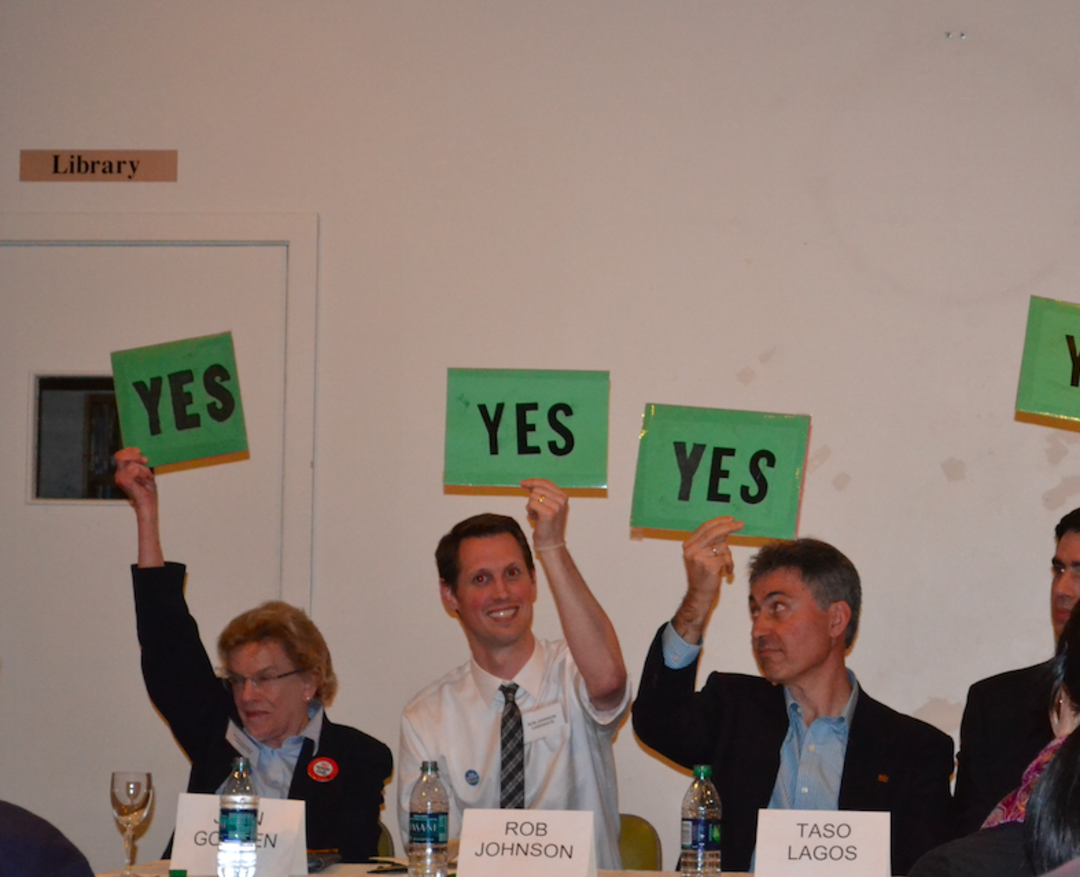
Candidate Rob Johnson, the executive director of Transportation Choices Coalition, tried to explain that "road diet" is a loaded term because reworking roads for bikes and buses and pedestrians doesn't make the road skinnier, it actually adds transit capacity—and as SDOT data has shown, removing lanes and consolidating turn lanes improves traffic flow.
The sarcastic frame about density highlighted Johnson's push back against the older crowd gathered at the Sand Point Community United Methodist Church last night; the crowd seemed more receptive to the other candidates', such as incumbent Jean Godden's and neighborhood council leader Tony Provine's, message of "preserving the character of the neighborhood." But Johnson, instead talked about "the suburbanization of poverty" and said that you shouldn't have "to drive until you qualify for housing," connecting the issues of affordable housing, transit, and density by concluding: "Density is a part of the conversation to fix wage inequalities."
Provine also took credit for last week's announcement that the city was building a new park in the district— which didn't quite jibe with his simultaneous suggestion that the city should use public land for housing. The park is being build on housing land that was specifically rezoned for denser housing stock to accommodate the coming light rail station two blocks away.
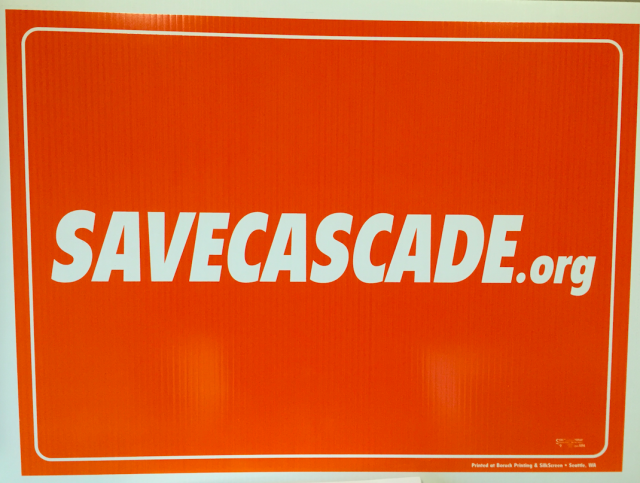
3. Speaking of Johnson, he was endorsed by the Cascade Bicycle Club last night.
The important news there isn't so much about Johnson, it's about why they were able to endorse him. The CBC board took another vote last night, rejecting a controversial proposal to drop the group's 501(c)(4) status—IRS status that allows groups to endorse candidates, contribute money to candidates, and budget more time to lobbying.
CBC had been thinking about deprioritizing its advocacy, but after a grassroots effort—"Save Cascade"—emerged and organized in advance of last night's vote, the board voted 9 to 2 against the idea.




